Transit Camp Westerbork (continued)
Thrown from a Train

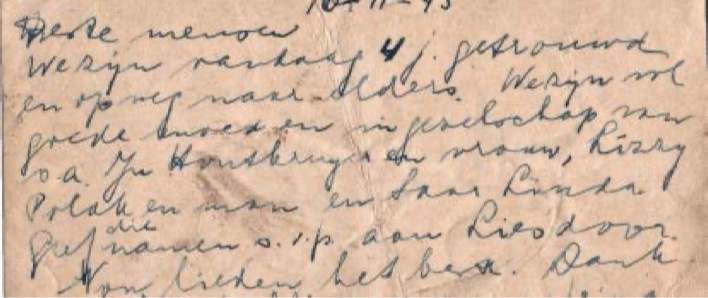
Dear people,
Today we have been married for four years and we are en route to elsewhere. We are in good spirits ... hope to be able to keep you posted from there as well…. Yet, it is clear that she was not completely in the dark because she continues... We are probably going to Ausw (Auschwitz) where (text crossed out) will know us.
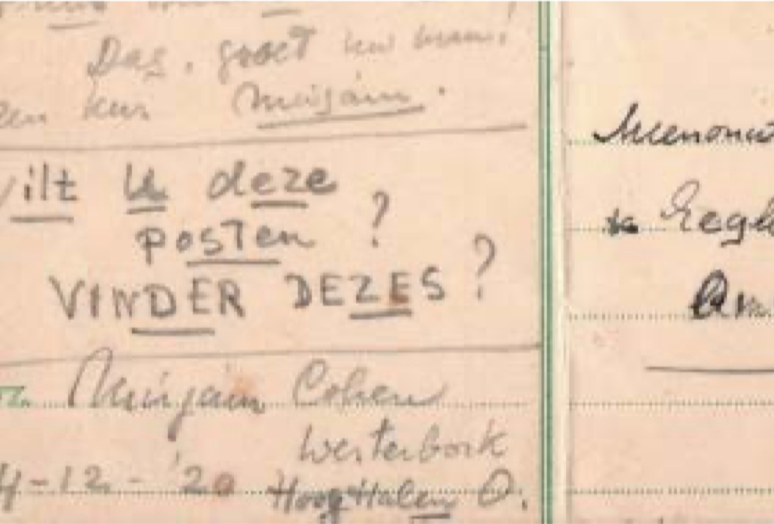
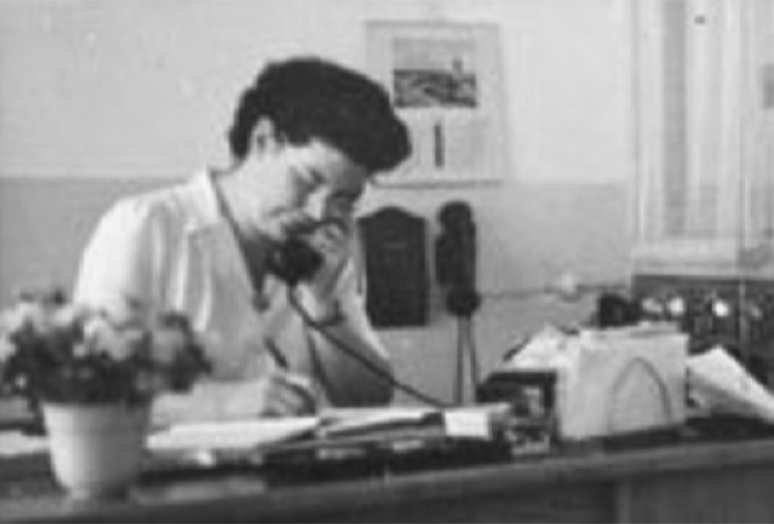
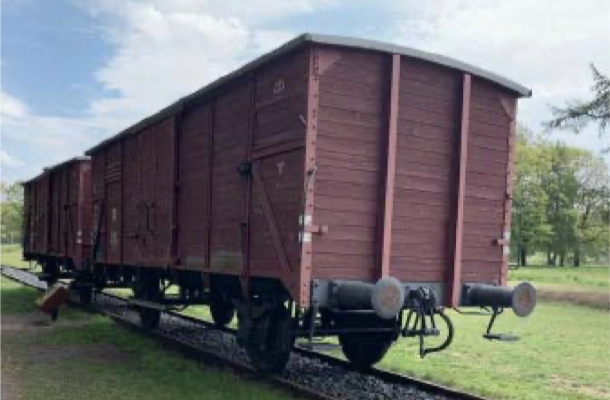
Each Monday, the camp administration would post a list of names of those who would be leaving on the Tuesday morning train “to elsewhere”. People had no time to inform family and friends of their imminent departure. Internees often saved a postcard that would be written and thrown from the train. Such postcards wound up along the train tracks and were mailed by sympathetic locals or railway workers who found them. This is how those left behind receive a sign of life –often their last – from loved ones.
..png)
We, my parents and Jacques, are on the train to Westerbork. Mirjam says she will send the barracks number from the camp, but I suspect it will not be possible because we will probably go elsewhere, although I do not know where… Will you please mail this? FINDER OF THIS?
Mirjam married Jacques Albert Weijel at Westerbork. Both were deported to Theresienstadt and received permits to go to Switzerland and survived the war.
The Lippmann Rosenthal Bank
Lippmann, Rosenthal & Co. (LiRo), in Amsterdam, took its name from an established Jewish bank of the same name. The Nazis hoped to make this new bank appear trustworthy, but it was established in an attempt to encourage Jews to register their money and valuables, whereupon the bank would systematically confiscate these assets. Ordnance 148/1941 of August 8, 1941, ordered well-to-do Jews to use this bank. Later, this became compulsory for all Jews. Following ordnance 58/1942 of May 21, 1942, all claims had to be reported to the bank. After June 30, 1942, no Jew was allowed to possess more than 250 guilders. Jews who were sent to Westerbork had to surrender even that amount to a LiRo subsidiary branch located in the camp.
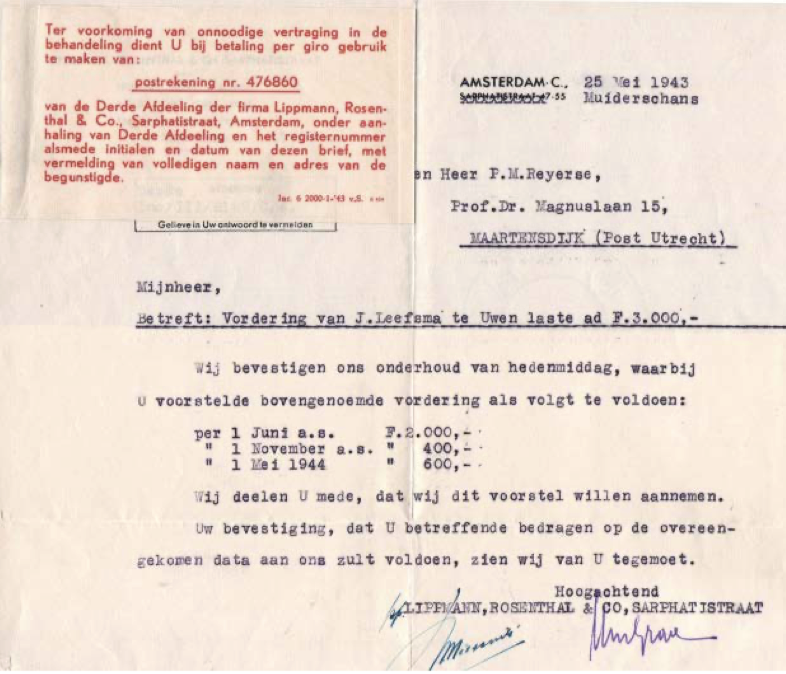
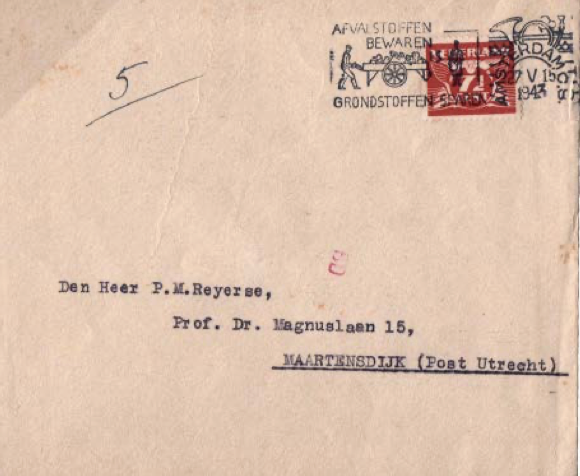
%20Announcment%2C%20January%201944.png)
By letter dated January 19 the firm of Lippmann Rosenthal & Co has imposed on us the obligation to investigate who of our policy holders should be considered Jews.... It is determined that anyone who does not submit the relevant declaration before February 4 has to be considered a Jew....
Freedom at a Price
According to a memorandum issued by Heinrich Himmler in December 1942,Hitler approved of the release of Jews in return for a sizeable payment inforeign currency, usually Swiss francs. In Holland such transactions wereapproved by Seyss lnquart, the Reich Commissioner, and Consul General OttoBene. The latter represented Joachim von Ribbentrop, Nazi Minister of ForeignAffairs, in Holland and was responsible for the deportation of Dutch Jews to thedeath camps in the east.
Dr. Arthur Wiederkehr was well known in Holland as a mediator who was ableto get refugees into Switzerland or arrange for permission to emigrate to SouthAmerica. He was an unscrupulous Swiss lawyer whose office was located atBahnhofstrasse 98 in Zurich. After the war, the Allies placed him on a list offigures who had been involved in negotiating ransoms using extortion and thesale of art looted from Jewish owners.
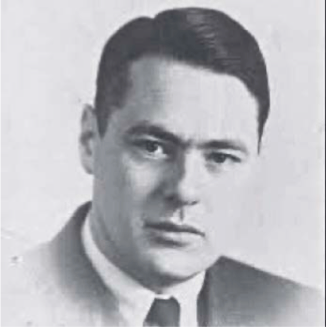
A post-war report into unscrupulous activities by Swiss nationals during the war by the investigators Zeugin andSandkohler carries the title: Switzerland and the German ransom extortions in the occupied Netherlands:Confiscation of Property, Ransom, Exchange 1940-1945.
About 400 Jews, residing in Holland, were able to buy their freedom by paying ransoms to attorneys likeWiederkehr. One of them was a German Jewish banker, Hans Kroch, who lived in Amsterdam. He paid 100,000Swiss francs to the SS via Wiederkehr and was able to obtain exit visas for himself and four others after theZurich lawyer spoke to Adolf Eichmann personally, demonstrating Weiderkehr’s access to the highest levels ofthe SS. In August 1942, Kroch and four others, probably family members but not his wife (see below) traveled to Argentina via Spain.

The relevant text in the investigator’s report (above) shows why Wiederkehr was unable to secure an exit visa for Mrs. Kroch. She had been arrested by the Gestapo after an escape attempt and was being held in a Concentration Camp. Mr. Kroch, on the advice of Dr. Wiederkehr, traveled to South America with a DSK NL (Dutch) visa. He carried a list of other Jews who wanted to depart. This “Kroch List” was given to Dr. Veit Wyler who passed it onto Dr. Wiederkehr.
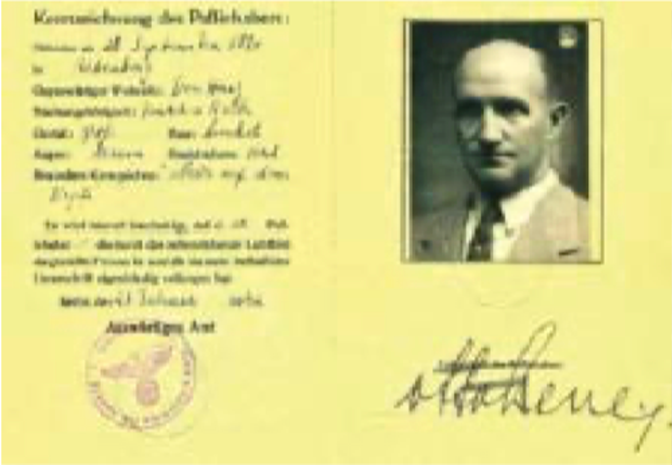
%2C%20April%2021%2C%201942.png)
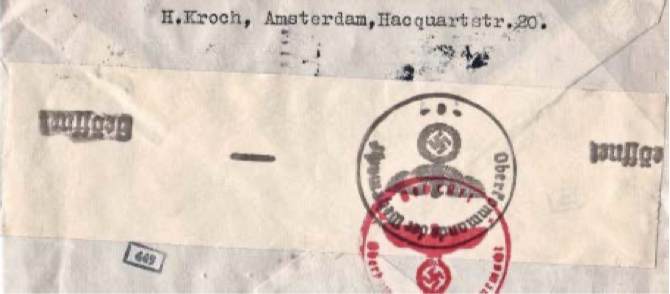
Hugo Kaufmann and his Bank
Hugo Felix Kaufmann founded the Dutch bank that bore his name in 1924. Kaufmann was born in Frankfurt on May 12, 1883, served in the German Army in World War I and moved to Amsterdam in 1918. He married Vella Sara Ettlinger in 1923 and they had 3 children. He acquired Dutch nationality in 1924. During the Second World War, the bank’s control came under a German administrator, Walter Malletke, and Kaufmann’s influence became increasingly limited. In April 1941, the bank was acquired by the Nazi-controlled Commerzbank for a pittance and profitable activities were transferred to a subsidiary. Kaufmann tried to obtain an exit visa to the USA from Dr. Arthur Wiederkehr, but although he was willing to part with all of his Dutch assets,the Germans did not consider his departure to be “in the interest of the Reich”.
Hugo Felix Kaufmann was detained on July 28, 1942, and taken to Auschwitz, where he died of typhoid on October 9, 1942. His wife, 3 children and other relatives were arrested on September 24, 1942, and murdered at Auschwitz just 4 days later.
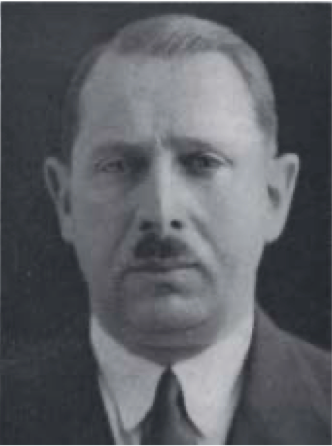
.png)
-2.png)
%2C%20September%2029%2C%201941.png)
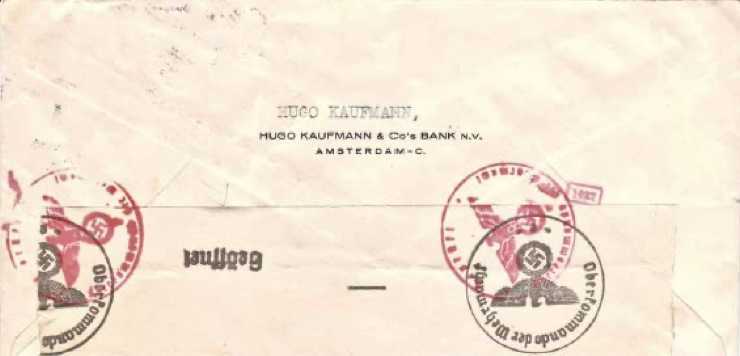
A Narrow Escape
On July 1, 1942, Camp Westerbork was put under control of the SD, the feared Sicherheits Dienst and became a transit camp. The first train with Jews left for AuschwitzBirkenau on July 15, 1942.
Rumors about its impending change of purpose were rampant, so it is no surprise that Arnold Hart, a Dutch Jew, tried to get his family out of Holland before then. The small Hart archive consists of three postcards that all date from June 1942. Clearly there were others sent earlier. The requests for Dr. Wiederkehr to act on Hart’s behalf become increasingly more urgent.
%2C%20June%205%2C%20194.png)
…headquarters here has still not received a response ... I hope you will make some progress so that we can finally find out where things stand…
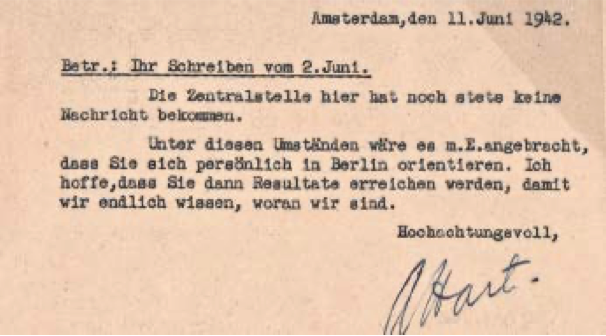
The records show that Arnold Hart, a company director, was born in Winschoten on December 12, 1880. As such, he would have been 61 years old when these cards were written. Wiederkehr’s efforts to arrange for the Hart family to emigrate to Argentina appear to have been successful but unfortunately Arnold Hart died in Buenos Aires shortly after arrival on December 23, 1943.
...neither myself nor the other three families have received any news from the central office in the Euterpestraat…(Amsterdam headquarters of the Gestapo and the SD).
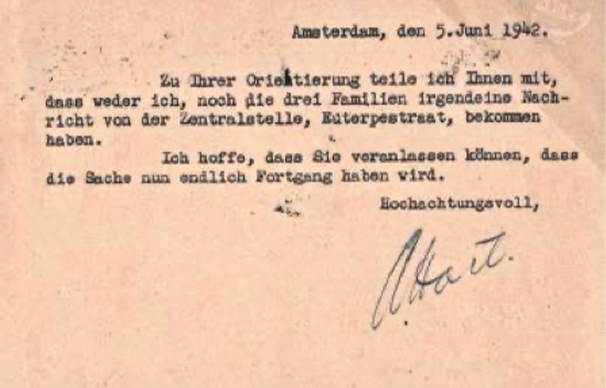
%2C%20June%2011%2C%20194.png)
%2C%20June%2013%2C%20194.png)
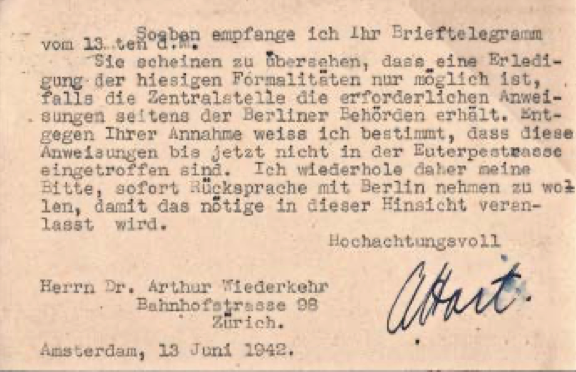
...you appear to overlook that taking care of complicated formalities is only possible if headquarters receives the required instructions from the Berlin authorities ... contrary to your statement, I know for certain that those instructions have not arrived in the Euterpestraat. I therefore repeat my request that you immediately consult Berlin....